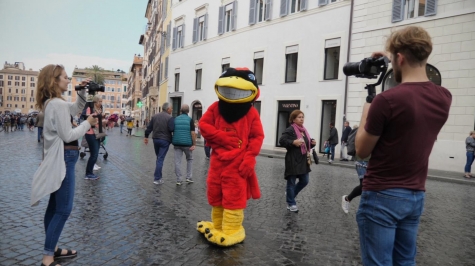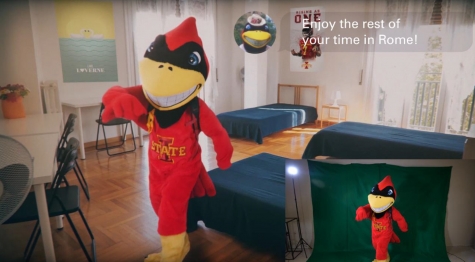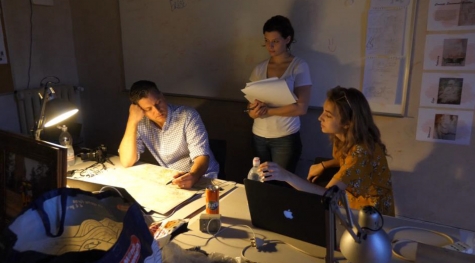
Filming near the Spanish Steps
Challenges Faced & Lessons Learned
By Brian Marczewski
Armed guards, torrential downpours, and the biggest filming project to date.
On October 8th, 2018, the Model Farm team had arrived in Rome, Italy.
The pieces were in place, the equipment was charged, and our star; a big red bird.
We had been contracted by Iowa State University’s College of Design, to create a short film featuring Cy the Mascot.
Our goal; capture the Study Abroad experience in 2 weeks.
This had been an experience of a lifetime. If I were to tell my 16-year-old self, a kid editing lightning bolts shooting out of his hands, that he would be filming and directing in one of the most beautiful backdrops in the world, young Brian would probably faint.
Not only because time travel had apparently been invented, but because filming in Italy was something out of a dream.
There were whisperers of this opportunity a year before, but nothing came of it in 2017. I had completely forgotten about it, until I received a call in 2018 from Tony, my Creative Director. We had gotten the green light.
We started planning months before. We were introduced to the director of the Rome studio, Pia. Multiple meetings with our College of Design contacts took place. Our project manager, Maggie, had worked feverishly on our schedule. The stage was set.
Now, when I mentioned armed guards, it wasn’t quite Italian Job level stakes. We weren’t Michael Caine and company, stealing gold from an armored truck. Just a few young adults, navigating inconveniences, turned learning opportunities.
The scope of the story seemed to change as the days went by. What started as a 2 to 3-minute sizzle reel, turned into a 3-part act, with a prelude and end credits. There were reshoots, where we had to realistically green screen Cy into an Italian apartment. Police had stopped us on the Spanish Steps, and a Mediterranean storm rolled in as we filmed at the Borghese Gardens.

Reshooting Cy on a green screen
“In my career, the hardest thing I’ve had to learn is delegation.”
-Tony Thrush, Creative Director
Words to live by. I tend to work alone, but this project pushed me to use all the resources at my disposal. This meant our team. We could not have captured all we did, with the challenges we ran into, without all-hands-on-deck. One of our designers, Brenna, handled the entirety of the animated credits and title screen. Gage, another designer with a love for movies, showed his ability to compose and direct a scene. All team members were vital to shaping the final story.
The 1st edits were not strong. The footage was nice, but the story was missing something. We needed to convey the feelings a college student would experience while studying in a world away. How would one handle the joys, stresses, failures, and triumphs that came with this?
With countless team meetings and revisions, we began to recut our story.
The right music made all the difference. Using a popular Ben Rector song, paired with an epic orchestral instrumental, we began to get a sense of what this short film could be.
We pushed our sound effects, on-screen graphics, and color corrections. We found opportunities for humor and bloopers.
In the end, we had created one of Model-Farms biggest achievements, collaboration. It was a lesson in changing course, finding your vision, and working as a team. I learned more about how to film, direct, and delegate work to our interns. This opportunity has forever changed how I work as a Video Production Manager, for the better.
The story you end up telling will usually be different than you imagined. This isn’t always a bad thing. Work with what you’ve been given, learn from mistakes, and push forward into greater things. We created a product to be proud of, with many more to come.

Tony, Maggie, and Brenna planning




